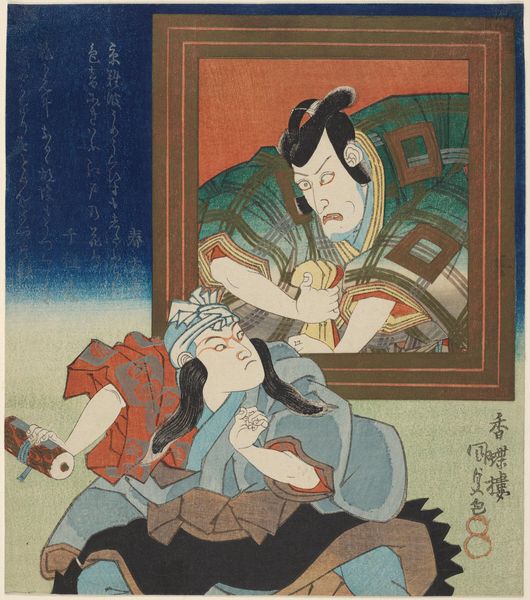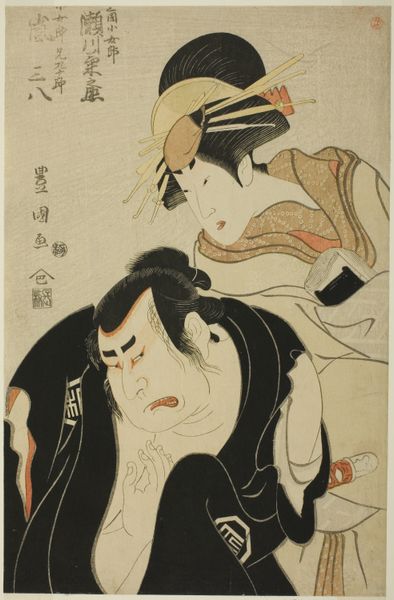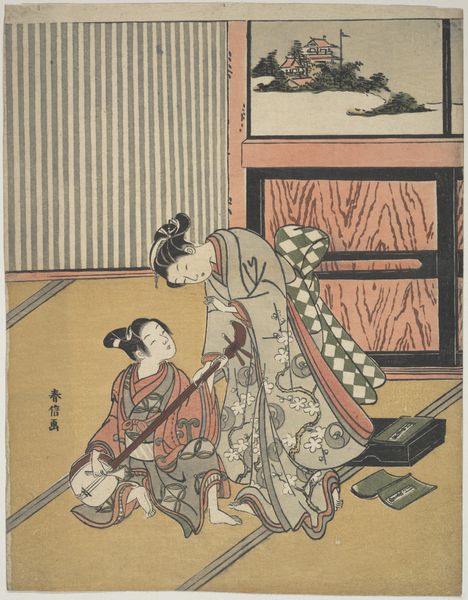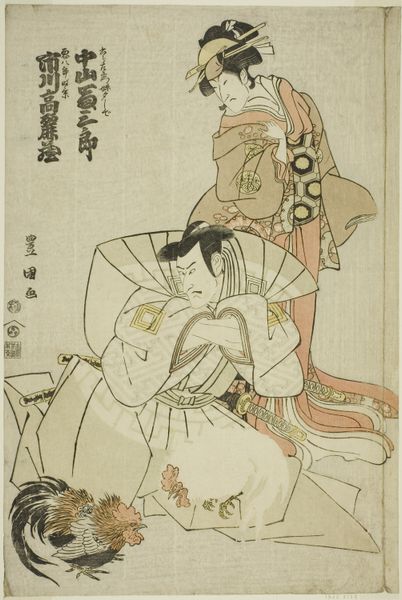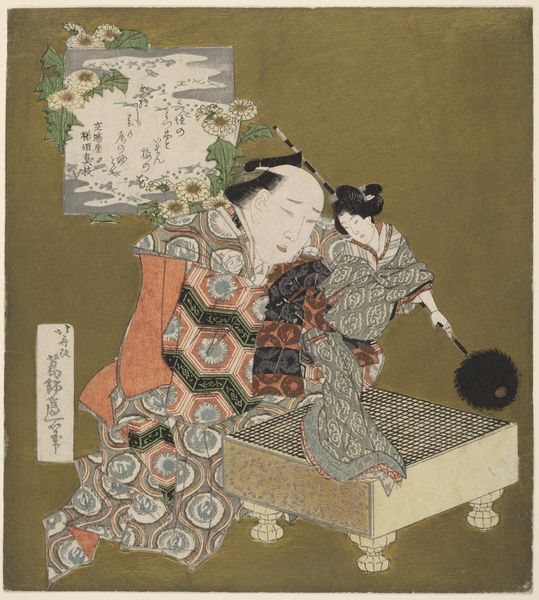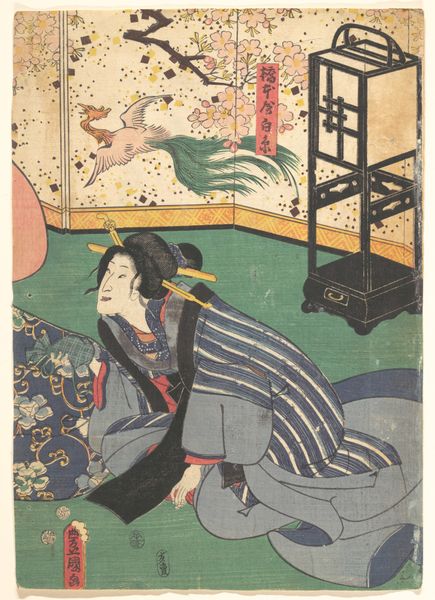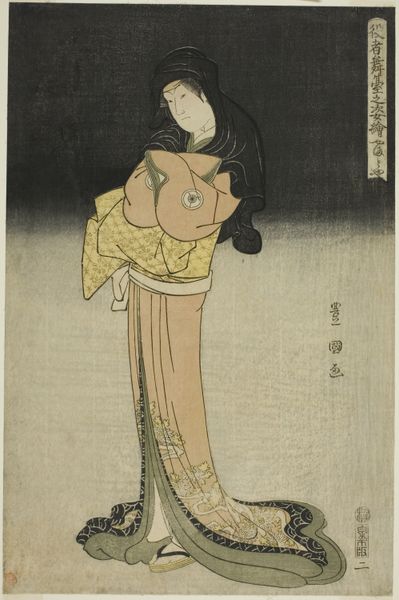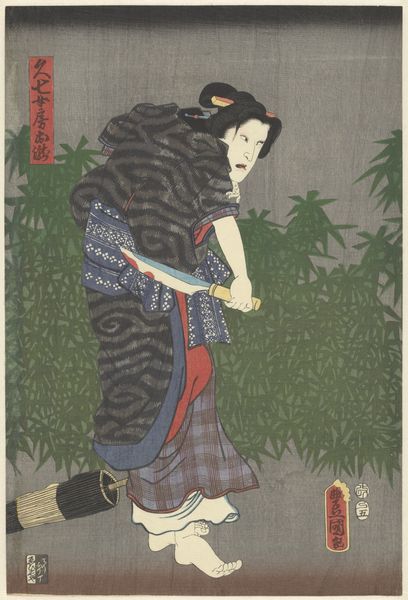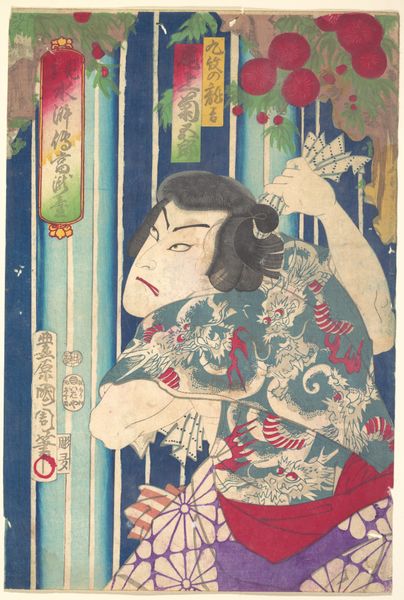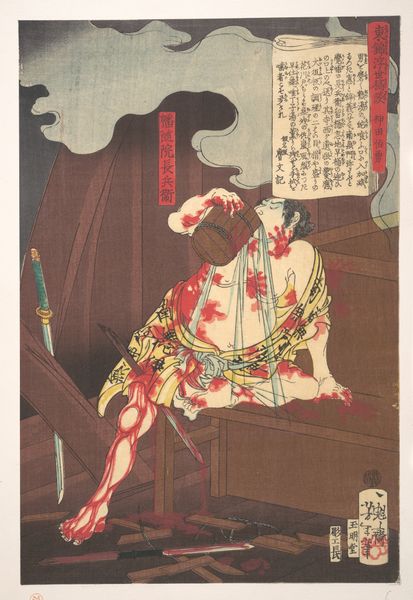
print, woodblock-print
#
portrait
#
narrative-art
# print
#
caricature
#
asian-art
#
caricature
#
ukiyo-e
#
figuration
#
woodblock-print
#
line
#
genre-painting
#
history-painting
Dimensions: height 212 mm, width 186 mm
Copyright: Rijks Museum: Open Domain
Editor: Here we have Utagawa Kunisada’s 1831 woodblock print, "Young Actor with a Portrait of Ichikawa Danjūrō VII." It's a fascinating image, a sort of "painting within a painting," or rather, a "print within a print." What stands out to me is how the materiality of the printmaking process informs its layered composition, it seems so intricate! What do you see in this work? Curator: As a materialist, I'm immediately drawn to the woodblock printing process itself. Each color, each line, represents a separate block, painstakingly carved and aligned. This isn't just about depicting two figures; it's about the labor and the artistic decisions embedded in its creation. Notice the plaid patterns of the robe and the textures: how do you think they represent consumption within Edo society at this time? Editor: That's fascinating! The plaid certainly seems deliberate. Perhaps a way of demonstrating status through the suggestion of opulent materials? But also, it makes me consider: is the younger actor critiquing the older one’s constructed persona or paying tribute? Curator: Precisely. Consider the role of the publisher. Woodblock prints were not just artistic expressions but commercial products. This image would have been widely circulated and consumed. By including a "portrait within the portrait," the artist comments on commodification and mass reproduction of identity. This allows for a critical engagement on social representation that transcends singular authorship, wouldn’t you say? Editor: I never thought of it that way, that labor and distribution would influence artistic intent, but it certainly gives a new perspective on this print and on Ukiyo-e traditions. Curator: Exactly! By shifting our focus from individual genius to material culture and production methods, we can gain a much deeper understanding of how art functions within society. I think thinking about "production" has changed my initial understanding!
Comments
No comments
Be the first to comment and join the conversation on the ultimate creative platform.
